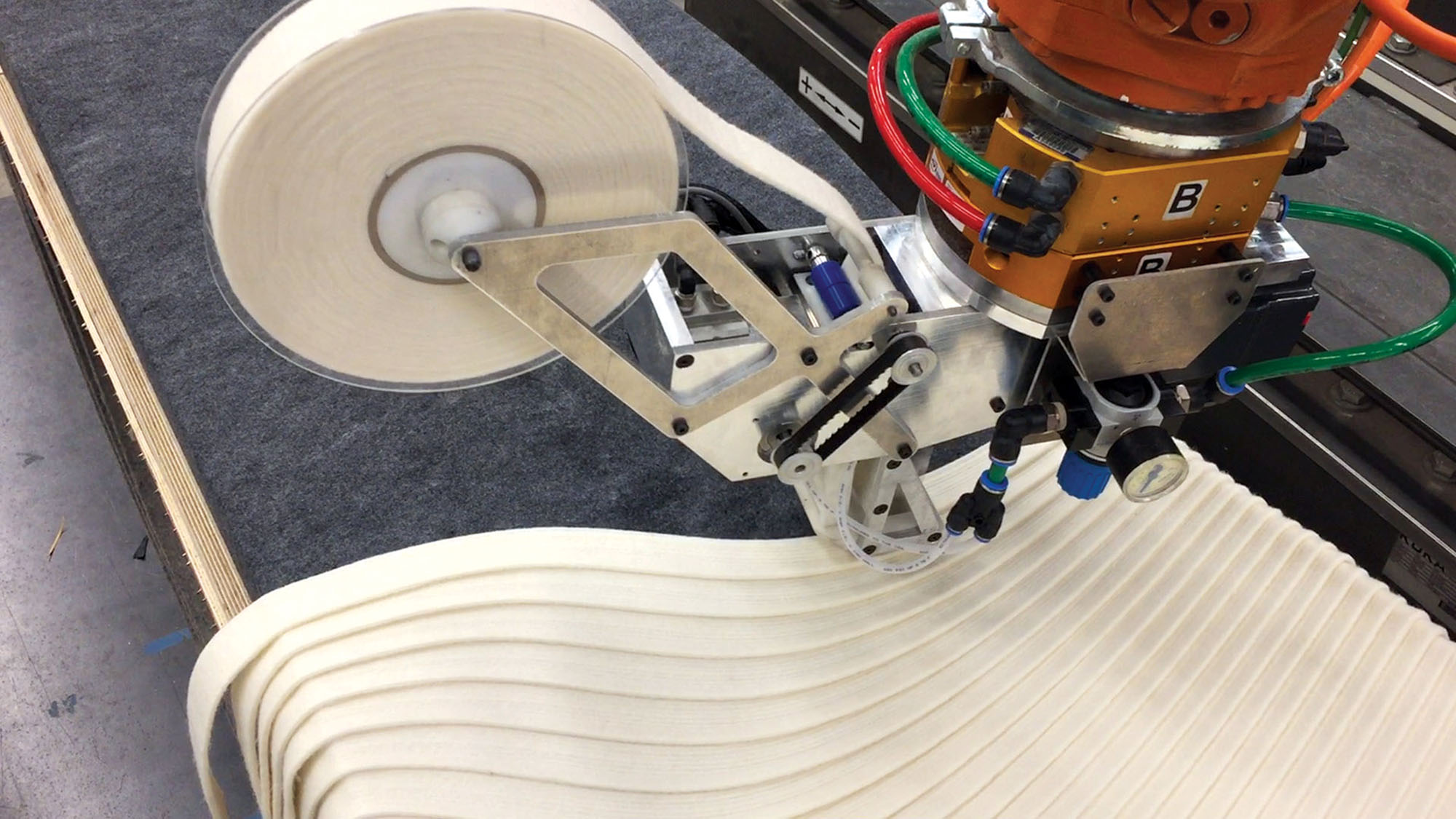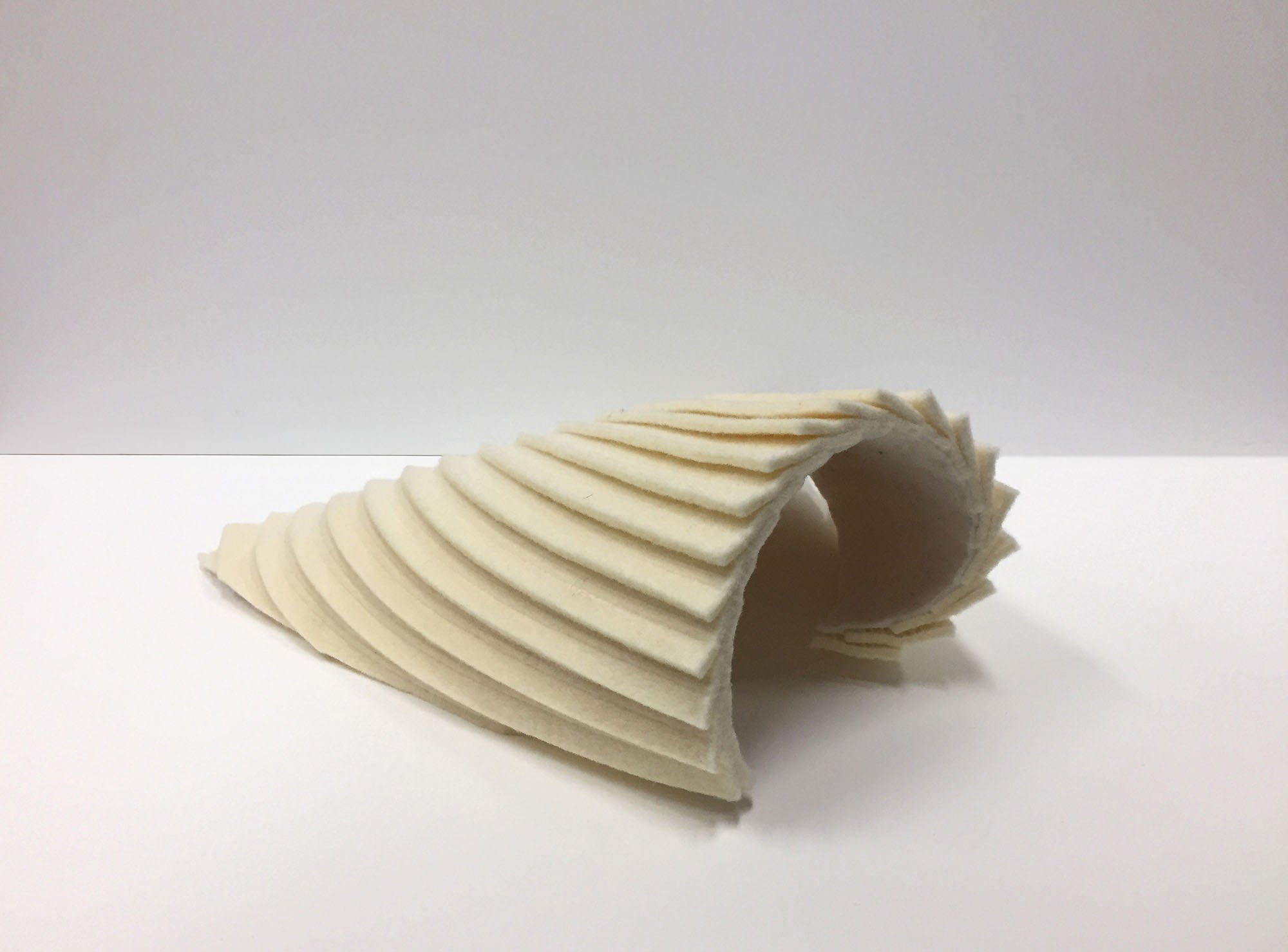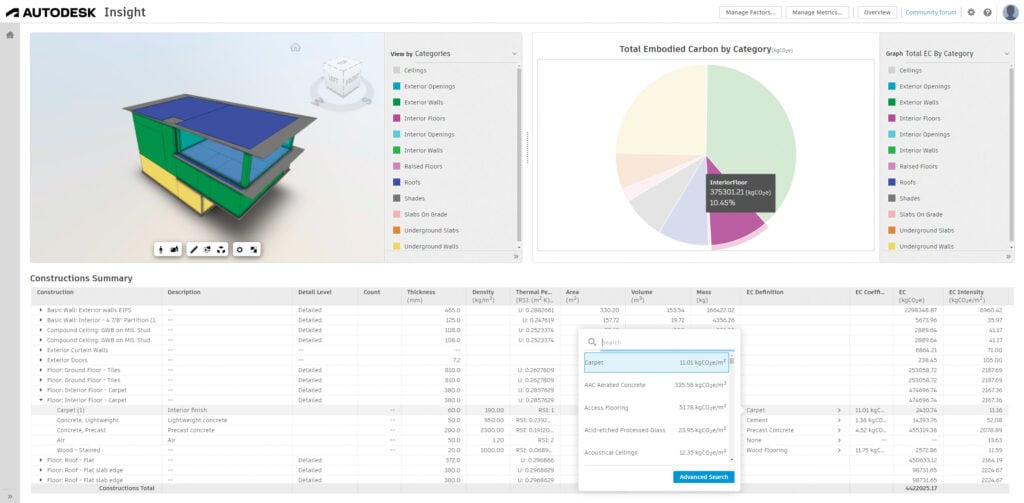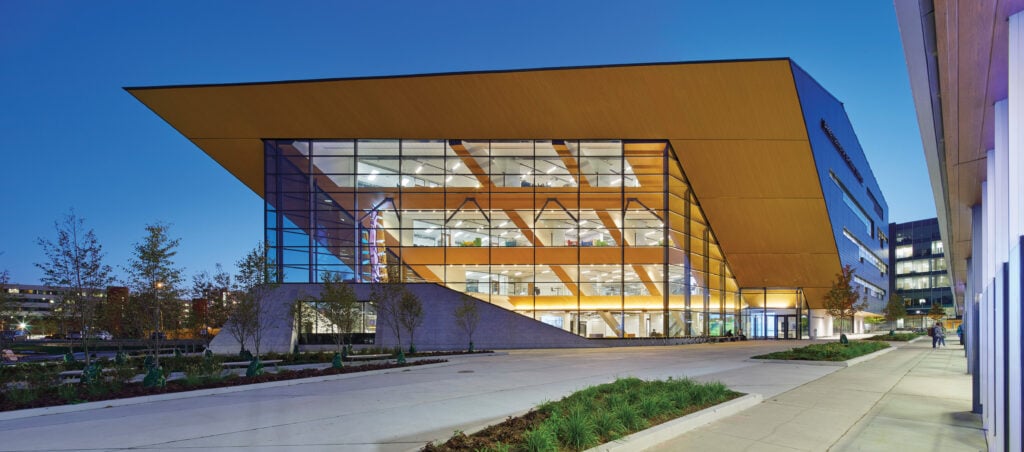
September 6, 2023
Tsz Yan Ng is Pushing the Boundaries of Material Innovation

Funded with support from Taubman College and the University of Michigan Office of Research, Ng’s Robotic Needle Felting project is a logical culmination of her upbringing and explores a novel manufacturing technique to fabricate nonwoven textiles. “The Robotic Needle Felting project is about changing our relationship to the material, in this case textiles,” says Ng. “Through the additive manufacturing process, the nonwoven textiles are layered, enabling complex geometries and coverage without loose excess material.” The absence of glue or threads allows for the components to be fabricated, and assembled, as homogeneous wholes of exceptional depth. The textiles may be used for a range of purposes, from thermal insulation to acoustic panels.
Ng’s firm was recognized as a 2022 Emerging Voice by the Architectural League of New York. She says, “My interest in rethinking construction is how different fabrication technologies, of specific techniques paired with material performance, can present new design opportunities, new assemblies, and ultimately new ways to interact with our built world.”
Would you like to comment on this article? Send your thoughts to: [email protected]
Latest
Products
Autodesk’s Forma Gets You Ahead of the Curve on Carbon
Autodesk Forma leverages machine learning for early-phase embodied carbon analysis.
Products
Eight Building Products to Help You Push the Envelope
These solutions for walls, openings, and cladding are each best-in-class in some way—offering environmental benefits, aesthetic choices, and design possibilities like never before.
Viewpoints
3 Sustainability News Updates for Q3 2024
Policy initiatives are gathering momentum as the federal government and building sector organizations align their expertise under the umbrella of the Inflation Reduction Act.





